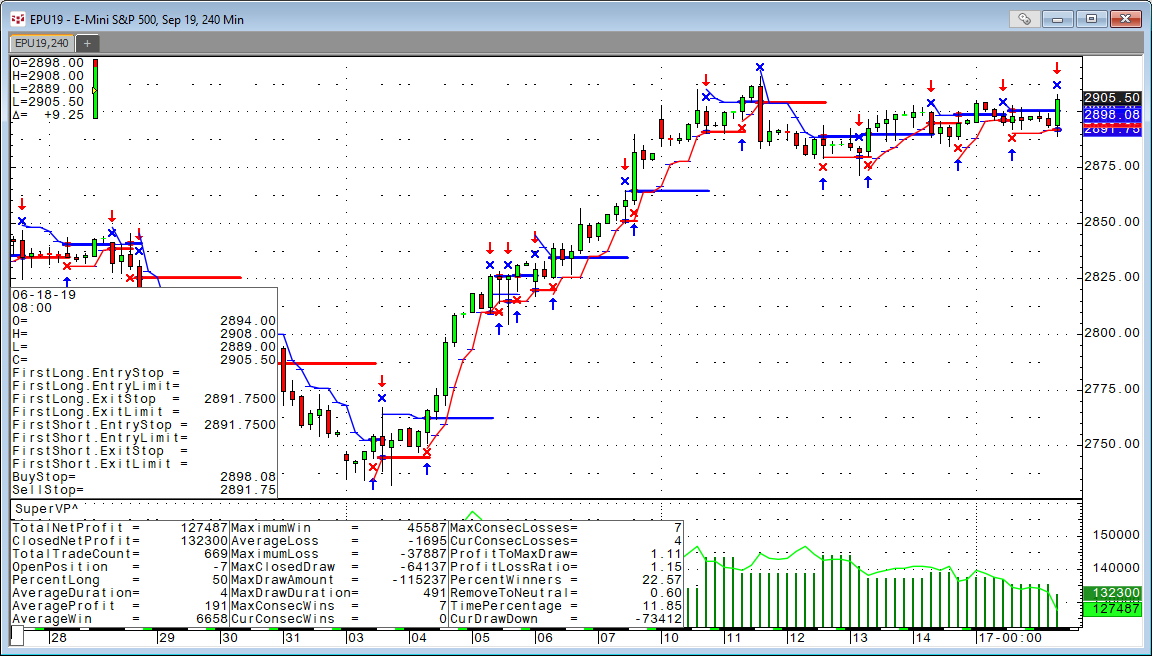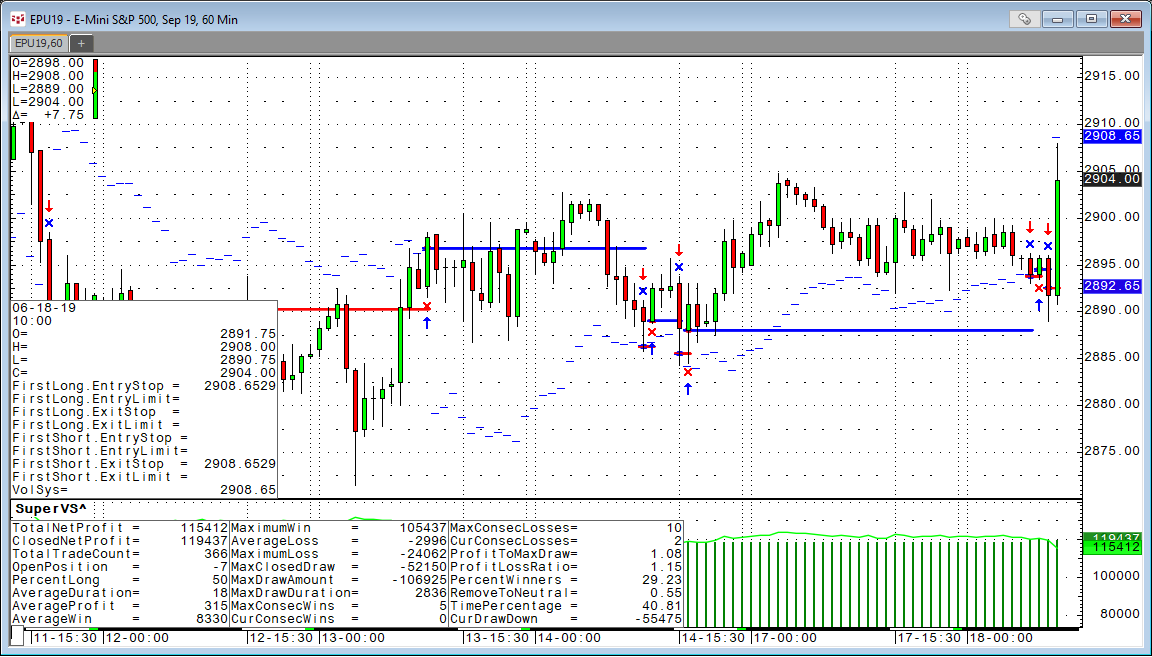Here are two more trading systems based on the Super Template that were recently created on a customers demand.
The idea is to have a few standard trading systems that have many customizable exits already built in:
- EOD - End Of Day will exit any position at the last bar of the day when checked.
- MMstop - Money Management is a simple stop loss. You just need to specify the amount.
- MM - Money Management Stop is on if checked.
- BEFloor - Break Even Exit will close the position when it returns to its entry price. It needs to reach a certain amount of profit (Floor) before it is activated.
- BE - Break Even Exit is on if checked.
- DRTstop - Dollar Risk Trailing is a classic trailing stop that is based on maximum profit during the trade (calculated by each close).
- DRT - Dollar Risk Trailing is on if checked.
- PRTstop - Percent Risk Trailing puts a stop below the maximum profit close to risk x% of the money already gained in the trade. The value is in percent.
- PRTfloor - Percent Risk Trailing needs to reach a certain amount of profit (Floor) before it is activated.
- PRT - Percent Risk Trailing is on if checked.
- PTtarget - Profit Target exits a position if a certain amount of money is gained.
- PT - Profit Target is on if checked.
- ATRperiod - Average True Range trailing stop uses the value of the Average True Range study when a trade is initiated. ATRperiod is the length of the ATR measurement.
- ATRfactor - ATRfactor is the parameter that determines how many ATRs the stop is placed away from the market.
- ATR - Average True Range trailing stop is on when checked.
- ES - Entry Stop places an initial stop on the low (for long trades), or on the high (for short trades) of the entry bar. Entry Stop is on if checked.quantity - quantity is the trading size, in contracts, for a stock or future trade.
- FX - If FX markets are traded, the quantity gets multiplied by 100,000. If you want a clip size of 1,000,000 per trade, that is a quantity of ten with FX multiplier checked.
Volatility Stop
Volatility Stop (VolStp)
The Volatility Stop study sets stop values based on previous prices and the ranges of prior bars, giving the user great flexibility in calculating stop targets. The stops are calculated by adding the smoothed moving average of the ranges of the previous bars. The system gives sell stops by adding a moving average of the ranges of the previous bars to the lowest close. Likewise, it gives buy stops by subtracting the moving average from the highest close.
Parameters used for the trading system are:
| Ago | Number of bars back that the calculation should begin. |
| Factor | Amount by which the average range is multiplied by before it is added to the base. Higher factors result in looser stops and, therefore, less switching between long and short. |
| Period | Number of bars in the lookback range. |
Volatility System Volatility System (VolSys)
The Volatility System study was developed by J. Welles Wilder Jr. He explains it in detail in his New Concepts In Technical Trading Systems.
The Volatility System is a trend-following system.
The paradigm is a stop and reverse trading system with a smoothed moving average of the ranges of previous bars. This average is added to the lowest close (for a buy stop) or subtracted from the highest close (for a sell stop), which occurred while the stop was active. The system allows the stops to back off from the market when volatility increases. However, since the stop is anchored to the highest or lowest close, the backing off is only due to increases in the volatility.
Volatility System parameters:
| Factor | Amount by which the average range is multiplied by before it is added to the base. Higher factors result in looser stops and, therefore, less switching between long and short. |
| Period | Number of bars in the lookback range. |

